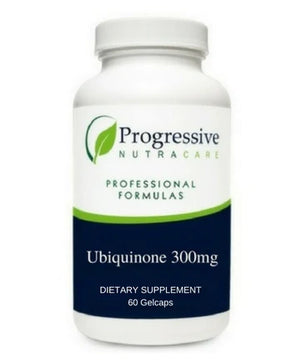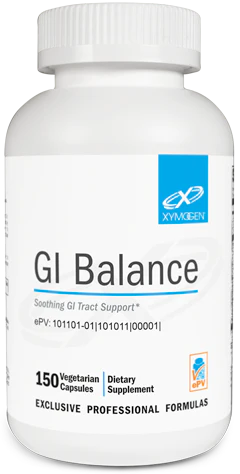Combating Chronic Inflammation

Controlling Inflammation has come to be seen as integral to maintaining health. Over half the people who die do so from a chronic inflammatory condition, Heart disease, cancer, diabetes, infections, autoimmune diseases and many other potentially terminal conditions involve inflammation- either as the primary or contributing cause of death. Beyond terminal conditions, inflammation can cause nearly untraceable silent suffering as it causes a myriad of symptoms that can be hard to trace but that can dominate a person’s life. So what is inflammation exactly, and why is it so perfidious?
Inflammation is a sign of your immune system at work. As your immune system senses a foreign invader, it mobilizes various immune cells to rush to the place of infection or foreign object. You have various types of cells that make up your immune system, and depending on what’s going on (and especially for how long), different parts of your immune system may respond to the threat. There are two basic types of inflammation, acute and chronic. Acute inflammation is the type you see when you have an injury or local infection where the tissue swells, clear fluid gathers at the site (composed of white blood cells and other immune components), and generally goes away after a relatively short period of time- days or weeks. The same is true for systemic infections by viruses, bacteria, and fungus- your immune system responds, perhaps with some heavier hitters like macrophages, and you recover in days or weeks. This immune response is natural, and essential to life. A healthy immune system shuts down infection before it gets any worse, and most usually the immune response is in proportion to the infection. To hear some medical writers tell it, however, the actual inflammation, rather than the immune response itself is what is touted as beneficial. While it’s true that the swelling and collection of fluid is a sign of your immune system working, the swelling itself is not what’s helpful. In fact, even with acute inflammation there can be some dangers. It’s generally better not to trigger the immune system at all given these dangers- although there is some debate to be had about herd immunity, and having a constantly updated collection of antibodies. Let’s just say that every time you trigger your immune system, there is a chance that harm can come from the inflammation entailed. The tissue swelling itself could cause long term harm to that tissue, As the neurocytes leave and the heavy hitters of the immune system rush in, if the infection lingers just long enough you’re at risk for the formation of fibroid tissue or granulomas (small hard lumps). While these events are more likely with chronic inflammation, it’s not so simple as that- you can still develop these during acute inflammatory episodes. In addition, the line between acute and chronic inflammation is not quite as cut and dry as it’s often been portrayed. Several, or many, acute infections risk that infection becoming chronic and demonstrating all of the classic traits of a chronic infection. The longer an infection lingers, the more likely that immune response becomes chronic. Chronic inflammation, as we’ll see, tends to mean that your immune system has become hypercharged and/or confused.
Another way in which acute infections can become chronic is when a healthy immune system overreacts to infection. This is the explanation for why sometimes people in the prime of their health develop long COVID, or why so many younger, healthier people died in the 1917-1920 Spanish Influenza epidemic. Sometimes, when an infection hits someone with an extremely robust immune system the body reacts explosively with the heaviest hitters of the immune system, cytokines, being sent in to crush the infection. This cytokine “storm” ramps the immune system up to intense levels- so much so that the accompanying inflammation can shut down vessels, cause them to go necrotic, and cause death- or, if not, this cytokine storm can end up causing inflammation throughout the body, and that inflammation can be chronic. This chronic inflammation, stemming from (overreactive) immune response can affect virtually every organ in the body, as well as joints, vessels, and muscles.
A cytokine storm resulting from a novel or serious infection, like COVID, is a shortcut to chronic inflammation in that it can produce the transition from acute inflammation to chronic inflammation quickly- and devastatingly. There are some other events that could cause a quick transition to chronic inflammation, depending on the person: major trauma, large scale exposure to molds and toxins, a reaction to a drug (especially some antibiotics), and other, rarerer events. COVID caused more of these fast transitions than usual. A more common path to chronic inflammation is chronic exposure to something that your body learns to identify as an enemy of the immune system. If this progresses to an autoimmune disease, then the body ends up attacking itself, either with or without triggers- a state in which someone is always inflamed and is difficult to control. Cytokines are often still involved, but over a longer period of time.
The same things that can cause a rapid onset of chronic inflammation can cause a slower development of the condition- in fact, this is the more usual path. If you are sick over and over again, your body may be trained to overreact. If you are constantly exposed to molds or toxins, your body may overreact. If you are injured time and again, your body may overreact. If you are constantly on antibiotics (or perhaps even exposed to them continuously in the foods you eat), your body may overreact. In addition to these, one of the most important triggers of chronic inflammation are allergies- particularly food allergies. As certain foods continue to cause irritation of the gut lining, the body reacts to those foods, sometimes with a cytokine response (C3d), and inflammation occurs in the gut. As that inflammation continues, and is repeated every time you eat the offending food, the immune response gets more intense, the tight junctions of the gut wall weaken (leaky gut), and allergens are carried into the bloodstream where they are attacked by the immune system- causing inflammation not only in the gut, but in other organs as well. In the case of food allergies as well, this can progress to an autoimmune disease like IBD (Inflammatory Bowel Disease). In fact, it may well be that gut disturbances from allergies and intolerances may be at the root of many autoimmune diseases through the release of Zonulin when the tight junctions of the intestinal walls are loosened. In general, an autoimmune disease is when the body starts attacking itself and causing chronic inflammation. Rheumatoid Arthritis (joints), IBD and Celiac Disease (gut), Hashimoto’s and Addison’s Diseases (thyroid), and MS are all examples of autoimmune diseases. In each case, although inflammation occurs at the focal point of the disease, that inflammation tends to spread to other areas of the body as well causing systemic symptoms.
The mechanisms of inflammation are complicated and can involve many pathways, but a simple way to look at it that still captures what is happening is that the body identifies (or misidentifies) an enemy to the body, various pathways are employed to send signals to trigger an immune response, that response is dictated by the signals sent identifying the pathogen, and the immune response escalates as needed. Antibodies are created as the body learns how to defeat the pathogen, those antibodies are triggered the next time the pathogen is encountered, and so on. Too many triggers can confuse the body into an inappropriate response or even to attacking the body itself. Immune responses cause inflammation as an effect of that response. Pathogens, allergens, and foreign bodies attacked in the gut repeatedly, risk damaging the gut lining and causing immune stimulating material to circulate in the bloodstream.This causes inflammation to spread throughout the body. Inflammation itself causes many illnesses, stress on the body, lack of clarity in thinking, and loss of energy. The more chronic inflammation you have, the greater the danger, the more symptoms, and the greater the risk of triggering an autoimmune disease which perpetuates and worsens the inflammation.
So how can you intervene to prevent or disrupt these inflammatory responses? Obviously, if you can eliminate the original cause, then that is the best strategy. The problem is that this isn’t always possible. You can try to protect yourself from infection- but you may fail. Most of us can limit our reliance on antibiotics, but not everyone. Food allergies are notoriously difficult to suss out without testing, because IgG allergies may take 72 hours to show symptoms, making it hard to associate those symptoms with particular foods. In addition, the symptoms of inflammation make take a while to develop in the rest of the body, and things like lack of energy and brain fog may not be recognized as symptoms of chronic inflammation. One possible way to effectively decrease inflammation is to interrupt some of the signals sent to the immune system that cause inflammation. Once inflammation has become chronic, unless there is an ongoing repository of infection, then the likelihood is that the inflammation is the result of confusion in immune response, or a continuing trigger such as a food or other allergy and intolerance. Since the greatest risk in a food allergy that causes chronic inflammation, for example, is the damage that can be done by the inflammation itself, then the best course of action might be to disrupt the pathways of immune response. This is exactly what steroids are prescribed for, and some people stay on them for months or even years. Unfortunately, long term usage of steroids have heavy costs, and they may disrupt the immune system too much. What’s a more natural and longer term alternative?
Excellent research has been done on curcumin, an extract from turmeric. Turmeric has been used for centuries in traditional Chinese Medicine (TCM) to treat inflammation and pain, and in Ayurvedic medicine for treating gut issues, arthritis, and restoring energy among other things. Those particular conditions indeed stem from and are exacerbated by inflammation. Let’s take a look at some of the modern curcumin research. Curcumin and the other curcuminoids (demethoxycurcumin and bisdemethoxycurcumin) have been demonstrated to have both anti-inflammatory and antioxidant properties (Lestari and Indrayanto, 2014). Antioxidants combat free radicals, which are an agent of inflammation, but in addition to this pathway, “Curcumin exerts anti-inflammatory effects by regulating inflammatory signaling pathways and inhibiting the production of inflammatory mediators” (Peng, et al, 2021). There are a number of signal pathways that curcumin seems to affect, and each and all of them can be different mechanisms to decrease inflammation. Aside from just signaling pathways, “curcumin decreased levels of pro-inflammatory mediators” (also Peng, et al, cited and linked above). Again there are a number of inflammatory mediation mechanisms that are influenced by curcumin- giving yet another set of mechanisms to reduce inflammation. In addition to signaling and mediation, curcumin also affects a number of the regulators of inflammatory response, giving it particular promise as a way to regulate disease “The regulatory effect of curcumin on immune cells is beneficial to its treatment of inflammatory diseases.25,26 Curcumin mainly acts on dendritic cells, T helper 17 cell, T regulatory cell. Th17 is an important pro-inflammatory cell that produces IL-17, IL-22, and IL-23 and promote inflammation response. Treg cells inhibit the inflammatory response.27 Changes in the number and function of Th17 and Treg can cause an abnormal immune response, leading to inflammation. Therefore, maintaining Th17/Treg balance is conducive to the maintenance of immune homeostasis and the treatment of inflammatory diseases.” (Peng, et al, again). Taken together, these effects on signaling, mediation, and regulation show multiple pathways for inflammatory control- particularly inflammation resulting in immune confusion and dysregulation.
Aside from the directly anti-inflammatory potential of curcumin, we’ve briefly mentioned its antioxidant effects already. Since oxidation is a driver of inflammation, the fact that curcumin can have an important effect on decreasing oxidative stress, again through several mechanisms, bodes well for its long term effectiveness.
Aside from the general investigation into the anti-oxidant and anti-inflammatory properties of curcumin, studies have also been done into the effectiveness of using curcumin for specific inflammatory diseases- including autoimmune ones. So far, modern research looks like it’s confirming what traditional medicine has known for centuries. “Curcumin has significant anti-inflammatory effects, and a large number of preclinical or clinical researches have studied its effect on inflammatory diseases, among them, inflammatory bowel disease, arthritis, psoriasis, depression, atherosclerosis and COVID-19 are the focus of research hotspots. Current evidence suggests that curcumin is effective in reducing levels of inflammatory mediators, and that curcumin’s anti-inflammatory properties may have a beneficial effect on these diseases” (Peng, et al, 2021). Most of these studies have shown that curcumin can either help prevent or treat these conditions, especially when combined with other interventions- even when we are talking about autoimmune conditions.
One concern has been with the bioavailability of curcuminoids. That is, how much of the curcumin is taken up into the body after consuming it? Since curcumin has a relatively short half-life, and fairly large amounts are needed, it means that you probably won’t get a therapeutic dose from eating a plate of turmeric laced vegetables. Supplementation is necessary to really take advantage of effective dosages, but even then there can be concerns about bioavailability because of stability and half-life. How can you deal with this? The most important strategy is to stabilize the curcumin as a supplement, and some supplements have accomplished this as Peng concludes: “Now, the pharmacokinetics and anti-inflammatory effects of curcumin have been improved to some extent by the structural modification and modification of curcumin, preparation research and drug combination therapy. Among them, curcumin dietary supplement or adjuvant drug has significant therapeutic effect, which is the most feasible way for curcumin application at present”. So, particularly, you need to find a curcumin supplement that has been stabilized for maximum biosorption and to prevent rapid decay of the curcuminoids. An excellent example is Progressive Curcupro 95. Not only is it formulated to increase absorption, but it contains BCM-95 - a Pure 100% Natural Whole Turmeric Extract, which remains detectable in the blood for up to eight hours. Break the cycle of inflammation, control your pain, and begin to heal!
- Robert Thomas







Comments 0